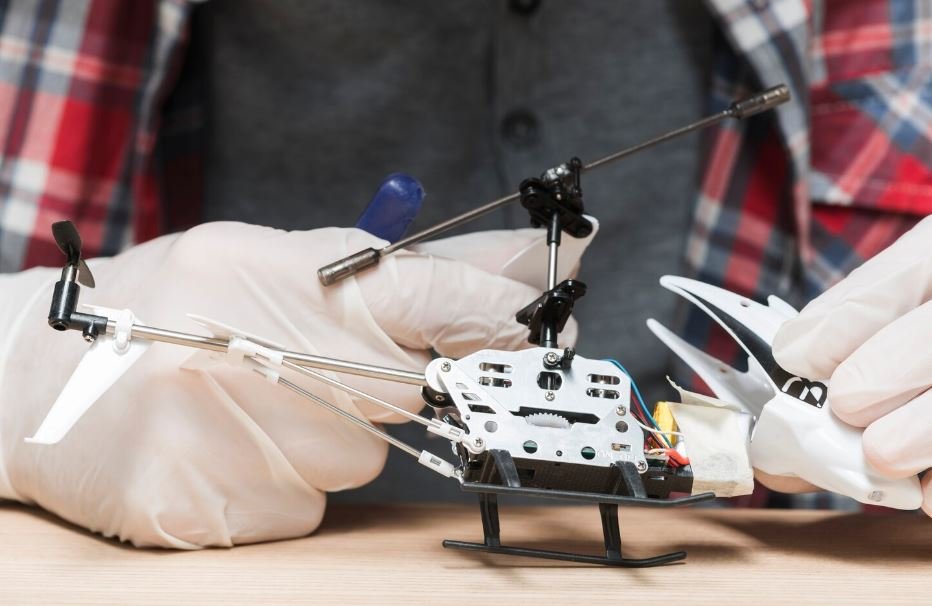
Not by accident, but by exceptionally creative engineering, the future of site safety is being built somewhere between a digital dashboard and a construction worker’s hard hat. A new layer of intelligence hovers just above the jobsite as concrete mixers churn and cranes swing overhead. Smart helmets that track biometric and spatial data and drones that scan with laser precision are becoming indispensable pieces of equipment. Their combination is a remarkably successful step toward safer, more intelligent workplaces, not just a technological upgrade.
The construction industry has faced pressure to change over the last ten years. Heatstroke, repetitive strain injuries, and scaffolding falls continue to be incredibly prevalent. The industry is at last adopting a more proactive safety culture by incorporating drone surveillance and incorporating predictive systems into helmets. These days, when a worker enters a hazardous area or exhibits symptoms of exhaustion, smart helmets with accelerometers, GPS, thermal sensors, and voice-assist AI send out real-time alerts. It’s a silent supervisor now, not just safety equipment.
| Category | Description |
|---|---|
| Key Technologies | AI-integrated smart helmets, autonomous drones, IoT sensors, AR displays |
| Primary Applications | Worker protection, real-time data collection, environmental monitoring |
| Industry Focus | Construction, defense, logistics, energy, mining |
| Safety Enhancements | Fall alerts, heat stress warnings, hazard mapping, fatigue detection |
| Efficiency Boost | Accelerated decision-making, streamlined inspections, proactive maintenance |
| Market Opportunity | Multi-billion-dollar global safety and automation investment wave |
| Driving Trends | Labor shortages, ESG priorities, insurance incentives, digital transformation |
| Key Innovators | Anduril Industries, StruxHub, ECOROADS, DJI, Boston Dynamics |
| Societal Implications | Reduced injuries, longer careers, elevated jobsite dignity |
| Reference | https://aviationweek.com/aerospace/emerging-technologies/how-ai-powered-smart-helmets-might-change-drone-warfare |
On-site supervision grew more difficult during the pandemic. Since supervisors couldn’t be there all the time, remote management became essential. Teams swiftly adjusted by utilizing helmet-based video streams and drone inspections. This approach, which was surprisingly economical and very effective, enabled engineers and architects to keep an eye on developments from a distance. After implementing these systems, one company in Utah reported a 32% decrease in inspection times.
Developers like StruxHub are incorporating jobsite data into centralized dashboards through strategic partnerships, providing project managers and safety officers with clarity that is extremely beneficial. Teams are now predicting risks and identifying patterns rather than responding to incidents. This mentality change from reactive to anticipatory is similar to how real-time analytics revolutionized finance. It is data-driven and is showing especially positive results.
Military-grade technology has recently made its way into the commercial sector. Originally created for drone-assisted combat awareness, Anduril’s AI-powered EagleEye helmet has sparked modifications among civilians. Similar models with live heads-up displays have been used by construction companies to warn of environmental hazards and guide workers through intricate installations. It now seems inevitable, whereas before it felt futuristic.
This area has a lot of promise for early-stage startups looking to innovate in infrastructure. The market is ravenous for products that are both incredibly long-lasting and state-of-the-art. Drones that can learn from their past flights, wearables that can withstand harsh weather conditions, and artificial intelligence that can adjust to human behavior are not luxury items. They are quickly becoming standard requirements for workplaces in the twenty-first century.
Businesses are also starting to automate safety compliance logs through the integration of blockchain technology. All maintenance reports, safety briefings, and equipment checks are permanently stored, which simplifies audits and lowers legal risk. This layer of accountability provides comfort in situations where there is a lot of liability.
This revolution’s human component is still crucial. In addition to lowering risk, a jobsite equipped with AI drones and smart helmets affirms the worth of every employee. It’s more than just data when a helmet detects an elevated heart rate and signals a break—it’s a culture of care. Employees have taken notice. Many say they feel more respected in addition to safer.
Insurance companies have started to reevaluate premiums since the introduction of these technologies. Significantly lower rates have been observed at sites with AI-powered systems, freeing up funds for further investment. This change is promoting wider adoption, particularly among mid-sized contractors who want to compete without compromising the well-being of their employees.
Anticipate even more sophisticated smart helmets in the years to come. Retinal displays that superimpose AR schematics straight into a worker’s field of vision are part of the early prototypes. Edge AI will be used to coordinate drone fleets, removing latency and increasing the capacity for real-time mapping. These tools are raising the standard for operational excellence because they are remarkably versatile in their execution and exceptionally clear in their intent.
Construction companies are now constructing resilience rather than just infrastructure through active deployment. The everyday routine of work is being transformed into something noticeably better and more human-centric by the integration of wearables, sensors, and drone networks.
The need for smart, flexible jobsite tools will only increase as more cities move toward climate-resilient projects and ESG standards. AI drones and smart helmets are a foundation, not a fad, helping to build a safer, more intelligent, and sustainable future from the ground up.
